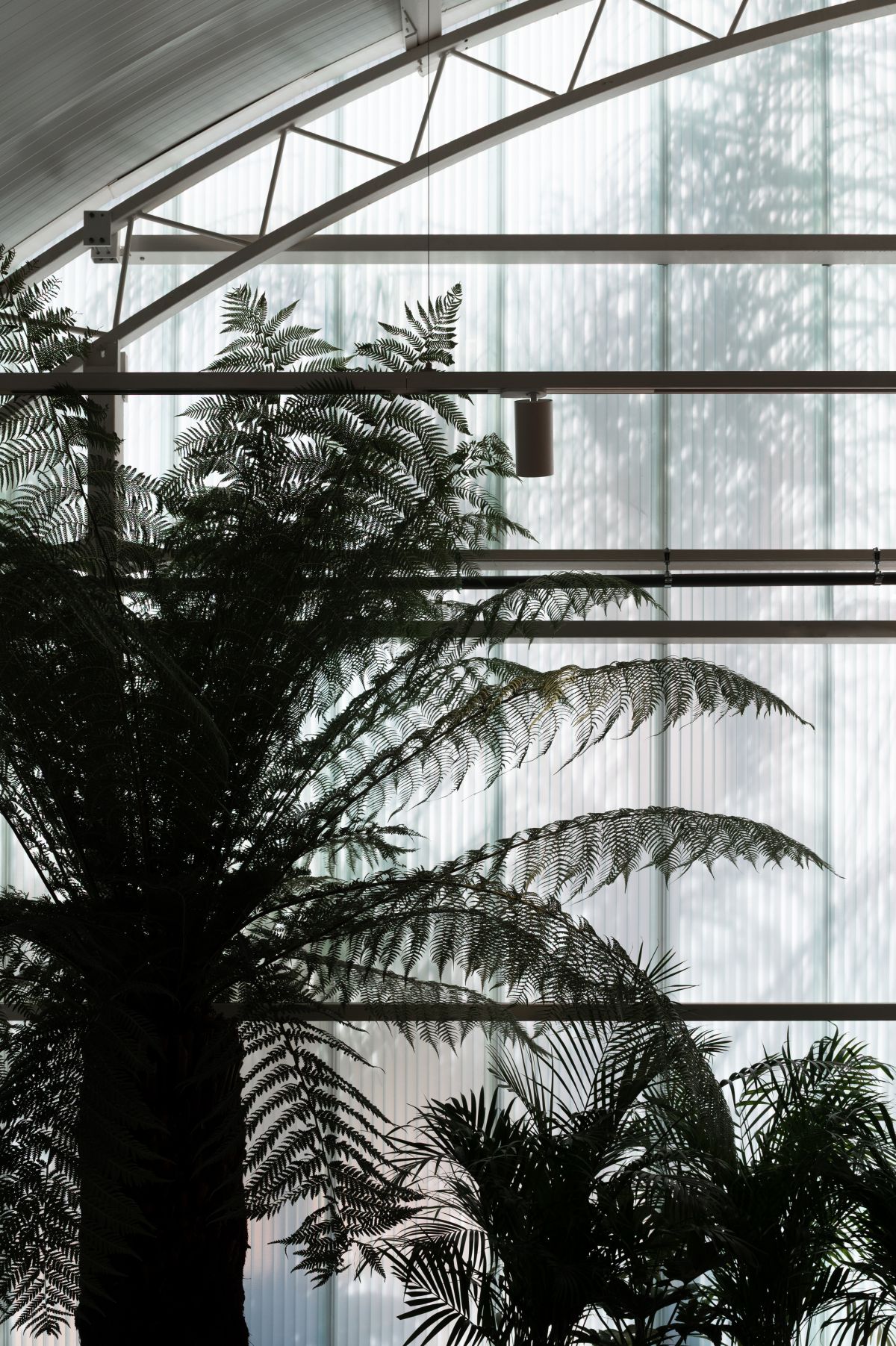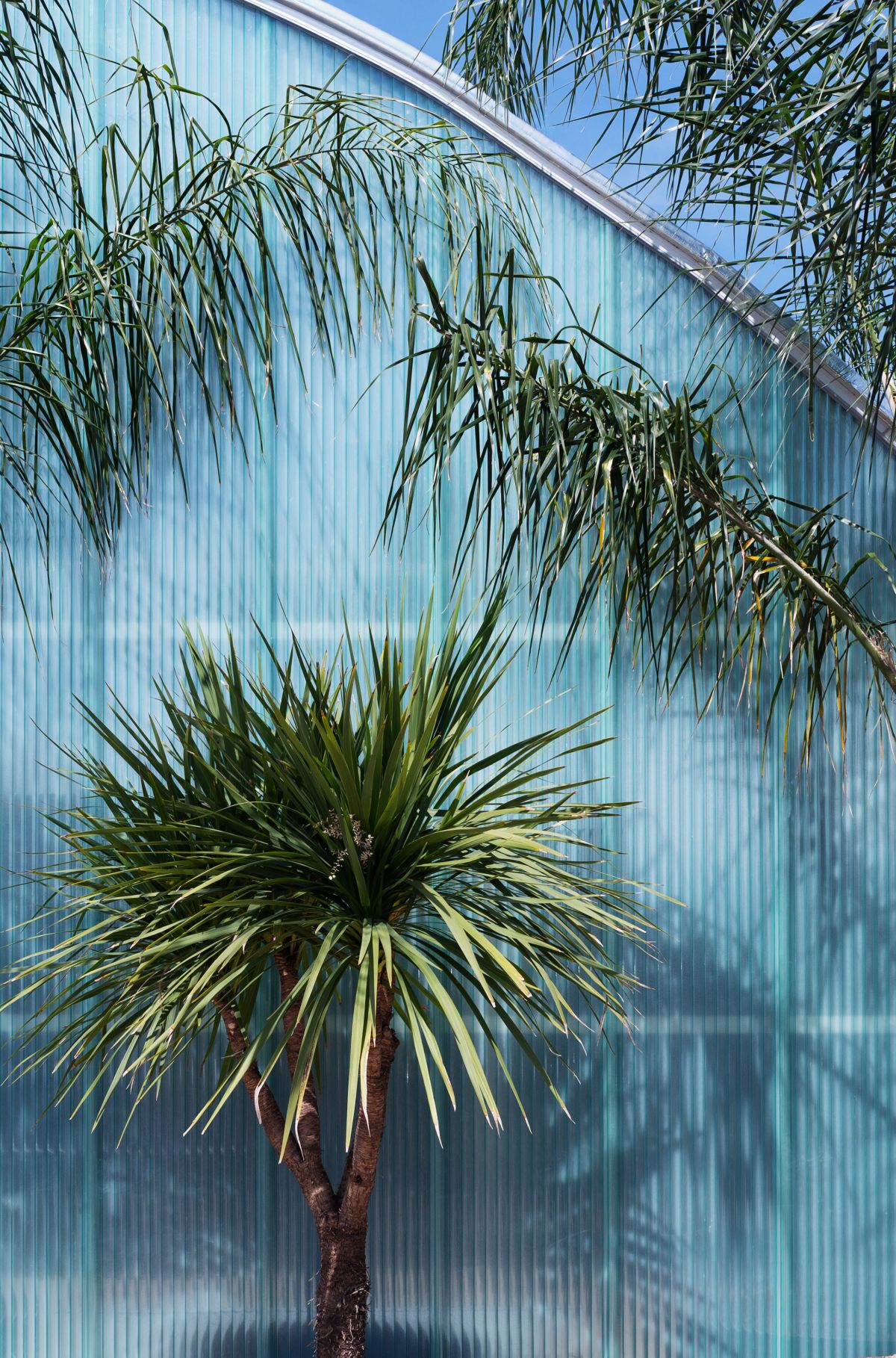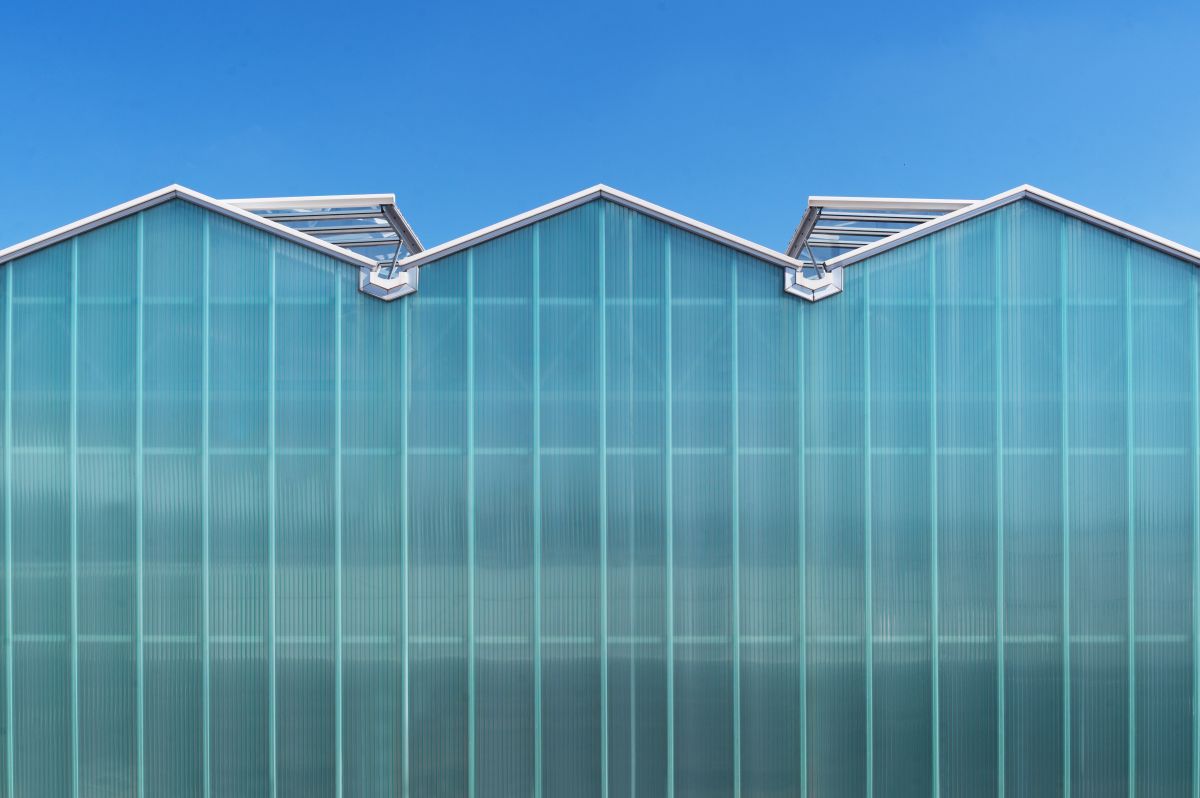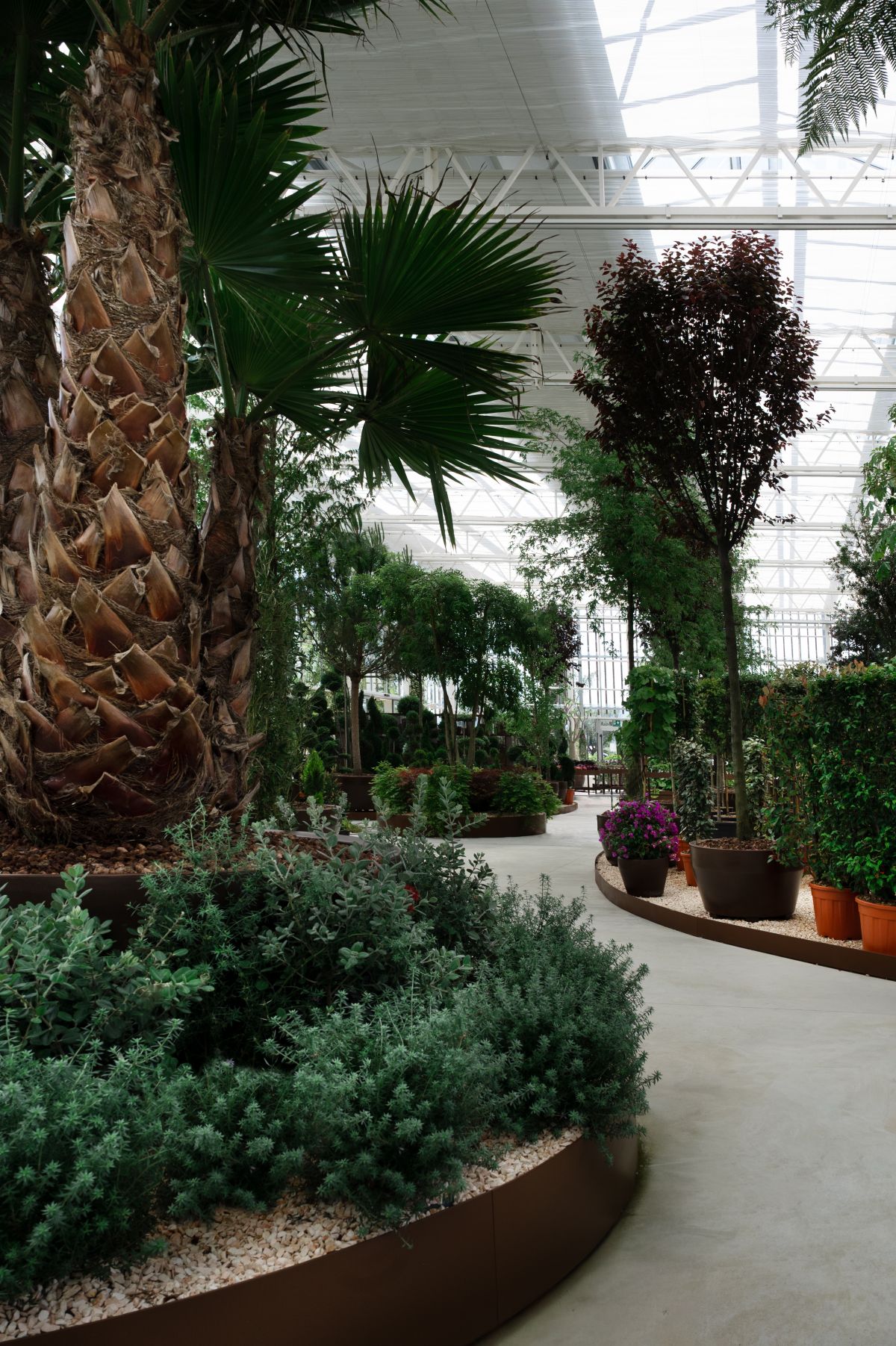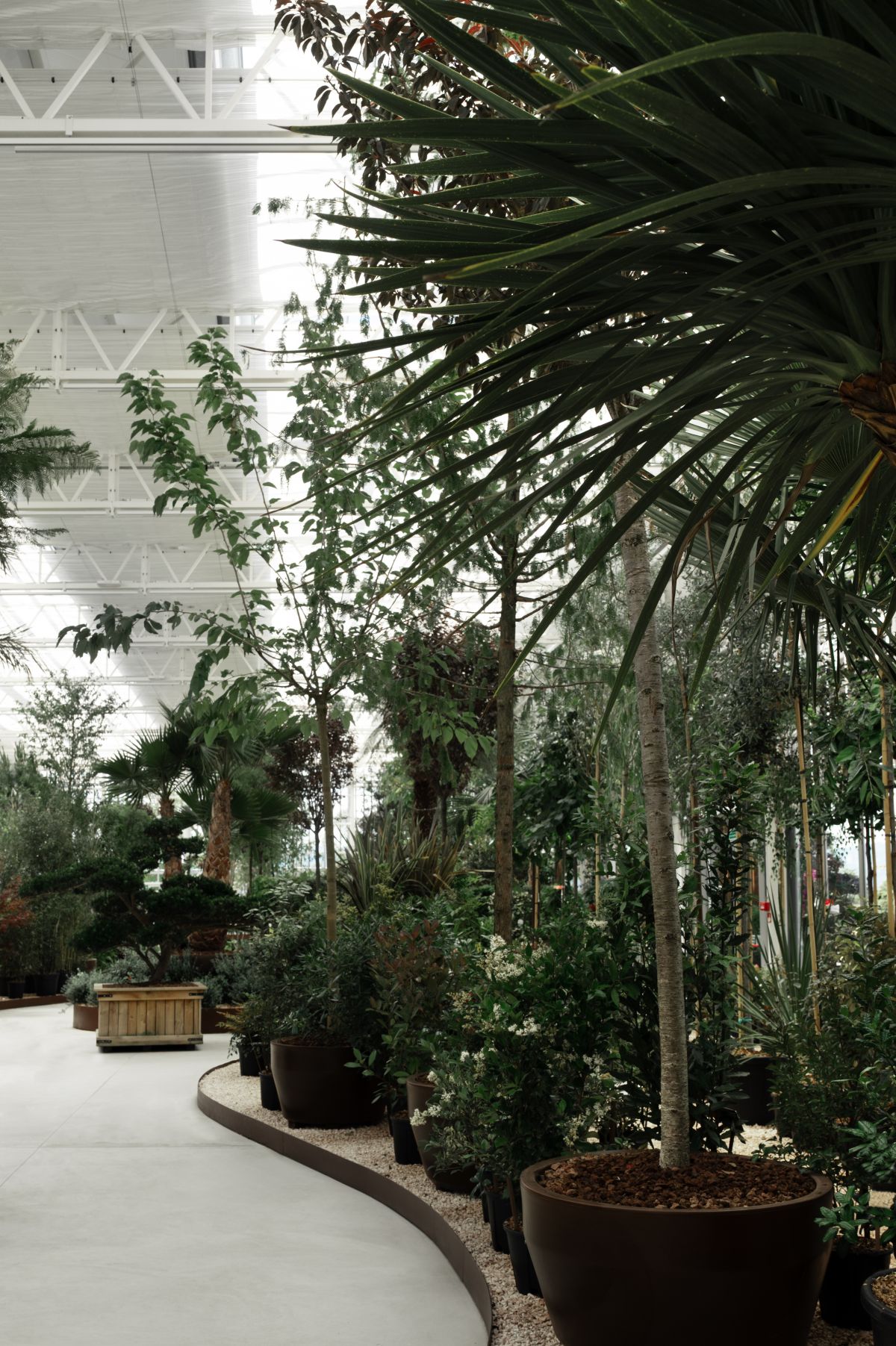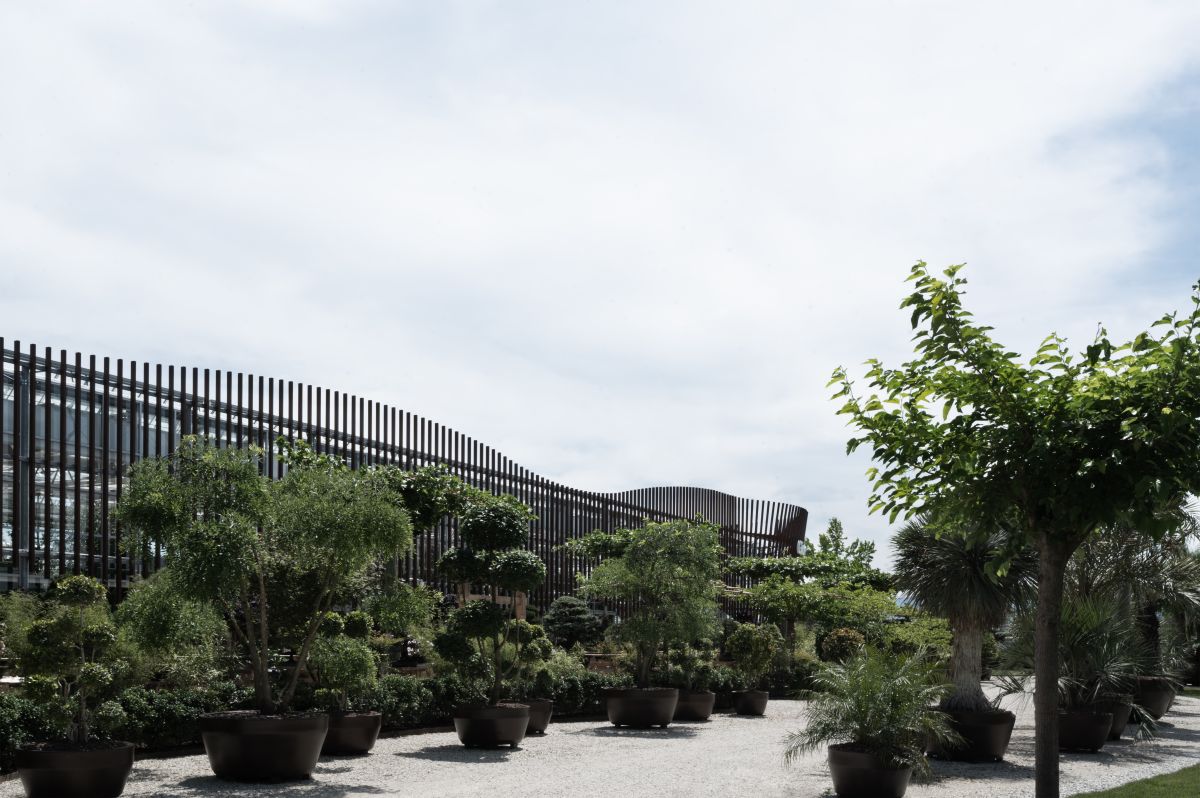Naturart Village - Rigenerazione Urbana di un’area vivaistica abbandonata
Architetti: Arch. Massimiliano Settimelli e LDA.iMdA architects
Foto di: medullastudiomedulla
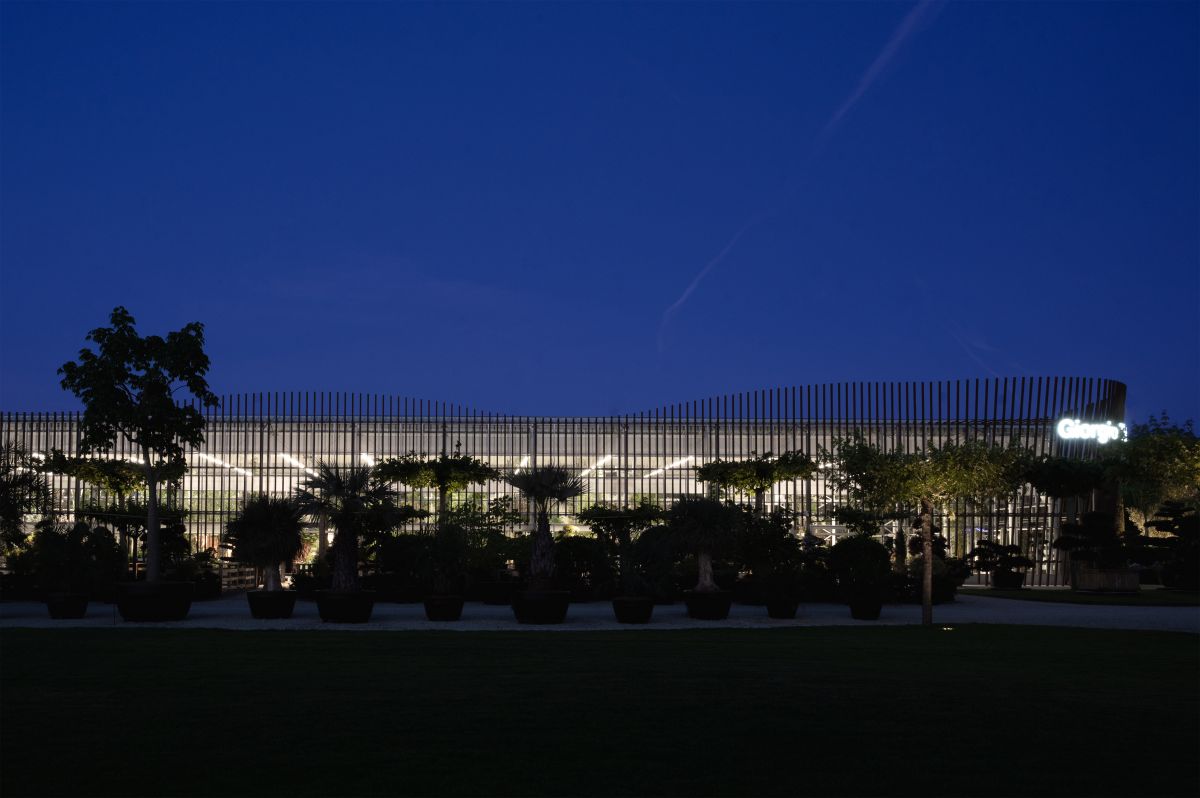
Il territorio urbanizzato ci offre spesso delle occasioni di riflessione e ricerca uniche.
Nella ridefinizione di un luogo dismesso dalle sue funzioni originarie, è necessario partire dalla lettura degli elementi rimasti e dall' importanza sociale e testimoniale dei fabbricati presenti.
Nel progetto della rigenerazione urbana di una ex Serra a Pistoia ci siamo trovati ad agire in un territorio di margine urbano tangente all'infrastruttura viaria che connette la città di Pistoia con l'area a est in direzione Prato.
Un territorio caratterizzate da Vivai e piccole frazioni storicizzate che formano un unicum nel paesaggio urbano di Pistoia.
Nel caso del progetto del Naturart Village si è avuto l’occasione di indagare sulla possibilità di un’area peri-urbana abbandonata di poter essere “rigenerata” creando le condizioni di riattivazione dei flussi relazionali.
L'incipit è stato il Garden Tourism: ampiamente diffuso nei paesi anglosassoni, si sta diffondendo anche in Italia ed il progetto Naturart village vuole essere una risposta a questa tendenza. Un complesso serra/vivaio/parco dove è possibile trovare molte attività legate al verde, per avvicinare la cittadinanza ed in particolare le nuove generazioni alla natura, all’agricoltura, al verde ornamentale.
Nello specifico gli elementi attivatori dell’intervento sono stati:
- Mixitè funzionale;
- Consolidamento dell’attività espositiva floro arborea;
- Attiviazione di iniziative culturali legate a temi coerenti l’offerta del luogo;
- Creazione di un parco urbano fruibile nel tempo libero.
Su queste iniziali premesse è stato possibile con la ristrutturazione scientifica della serra esistente e con l’ampliamento di una parte ad uso espositivo creare le condizioni per una rigenerazione urbana di una parte di territorio della città di Pistoia caratterizzata per la quasi totali da attività florovivaistiche.
Nella ridefinizione di un luogo dismesso dalle sue funzioni originarie, è necessario partire dalla lettura degli elementi rimasti e dall' importanza sociale e testimoniale dei fabbricati presenti.
Nel progetto della rigenerazione urbana di una ex Serra a Pistoia ci siamo trovati ad agire in un territorio di margine urbano tangente all'infrastruttura viaria che connette la città di Pistoia con l'area a est in direzione Prato.
Un territorio caratterizzate da Vivai e piccole frazioni storicizzate che formano un unicum nel paesaggio urbano di Pistoia.
Nel caso del progetto del Naturart Village si è avuto l’occasione di indagare sulla possibilità di un’area peri-urbana abbandonata di poter essere “rigenerata” creando le condizioni di riattivazione dei flussi relazionali.
L'incipit è stato il Garden Tourism: ampiamente diffuso nei paesi anglosassoni, si sta diffondendo anche in Italia ed il progetto Naturart village vuole essere una risposta a questa tendenza. Un complesso serra/vivaio/parco dove è possibile trovare molte attività legate al verde, per avvicinare la cittadinanza ed in particolare le nuove generazioni alla natura, all’agricoltura, al verde ornamentale.
Nello specifico gli elementi attivatori dell’intervento sono stati:
- Mixitè funzionale;
- Consolidamento dell’attività espositiva floro arborea;
- Attiviazione di iniziative culturali legate a temi coerenti l’offerta del luogo;
- Creazione di un parco urbano fruibile nel tempo libero.
Su queste iniziali premesse è stato possibile con la ristrutturazione scientifica della serra esistente e con l’ampliamento di una parte ad uso espositivo creare le condizioni per una rigenerazione urbana di una parte di territorio della città di Pistoia caratterizzata per la quasi totali da attività florovivaistiche.
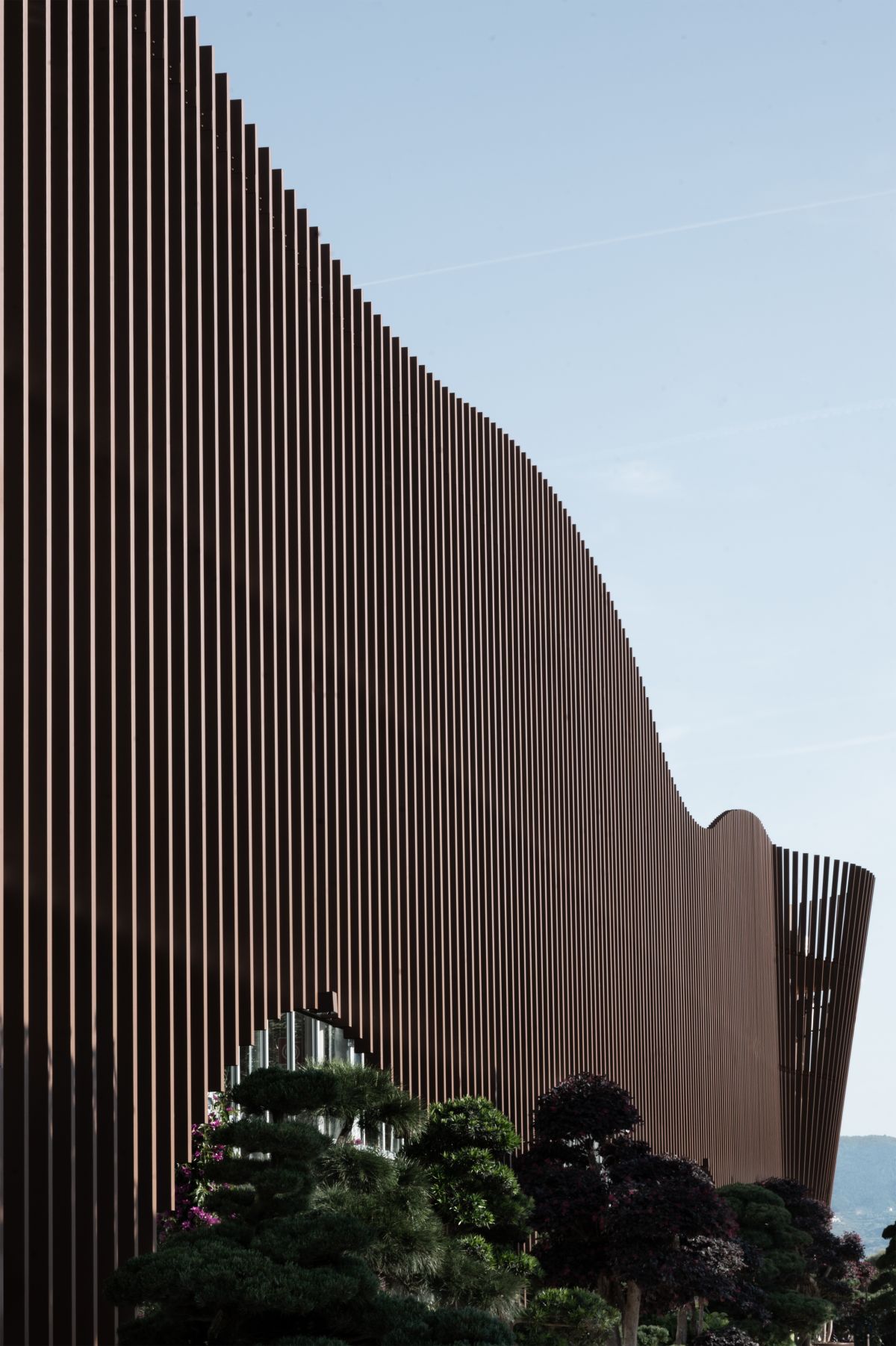
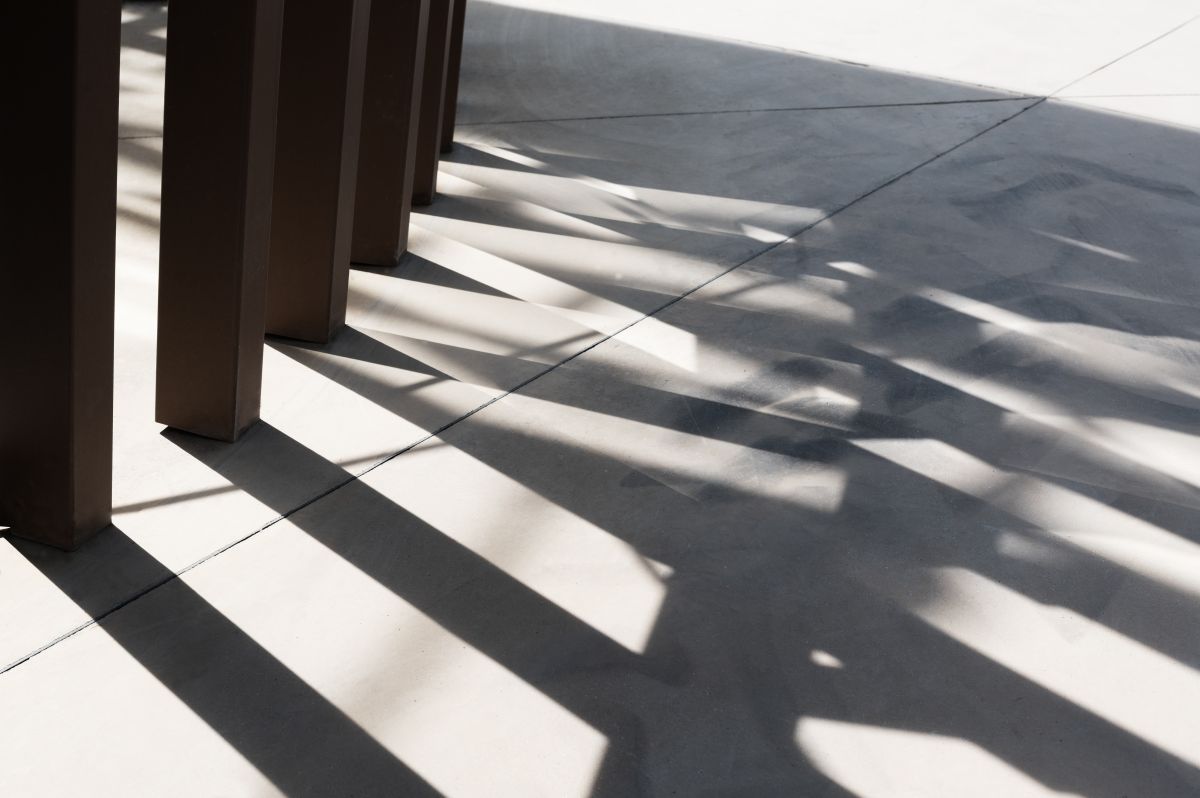
La “mixitè” funzionale è stata favorita grazie alla possibilità di svolgere un’attività commerciale nella serra storica. Si è reso possibile cosi prevedere attività legata al food che insieme alla valorizzazione ed al coinvolgimento di aziende del territorio di assoluta eccellenza ha creato un sistema integrato di assoluta esclusività nell’offerta.
Il consolidamento dell’attività espositiva è stato possibile grazie ad un nuovo volume a doppia altezza dove sono esposte essenze di altezza importante creando una situazione di fruizione spaziale di bosco indoor che privilegia il senso della fluidità della naturalità dello spazio.
In appendice a questo spazio e per una porzione residuale è possibile fare mini meeting e sviluppare attività di tipo culturali come mostre a tema e temporaneamente dei focus tematici.
Il complesso edilizio è costituito da due serre di cui una restaurata e una nuova, realizzate con tipologie diverse, di cui una a tettini su trave piana e una con tetti a capanna. Una disomogeneità tipologica che segue la necessità di funzioni interne diverse tra loro: la serra a capanna per le attività commerciali, la serra a trave piana per lo showroom delle piante.
A demarcare il confine tra edificato e spazio verde un grande frangisole in metallo che vuole essere un segno visibile del parco verso il paesaggio circostante e allo stesso tempo una sorta di “protezione” per le attività svolte nelle serre, un riparo dal sole e dal caldo che nei mesi estivi in queste zone è particolarmente intenso.
L’edificio costruito che ha le caratteristiche delle serre soprattutto nell’uso dei materiali dell’involucro in acciaio trattato con colori chiari e vetro, contribuisce a rendere neutro il confine dell’interno con l’esterno quasi impercettibile. Lo scopo non è stato quello di rendere il contenitore percettivamente e simbolicamente evidente ma al contrario rendere la linea di demarcazione dell’involucro leggera.
Le attività che sono varie ed eterogenee: un'area showroom per la mostra di piante, un'area per la divulgazione del verde, un'area per meeting, un'area per la ristorazione e la vendita di prodotti food.
Il parco “anulare” organizzato in quattro macro aree tutte quante confluenti verso le serre: l'area ad ovest con una mostra articolata di piante, bonsai e cactus; l'area ad est con aree didattiche e giochi per bambini, e due aree a nord con un ampio roseto e agrumeto.
Il consolidamento dell’attività espositiva è stato possibile grazie ad un nuovo volume a doppia altezza dove sono esposte essenze di altezza importante creando una situazione di fruizione spaziale di bosco indoor che privilegia il senso della fluidità della naturalità dello spazio.
In appendice a questo spazio e per una porzione residuale è possibile fare mini meeting e sviluppare attività di tipo culturali come mostre a tema e temporaneamente dei focus tematici.
Il complesso edilizio è costituito da due serre di cui una restaurata e una nuova, realizzate con tipologie diverse, di cui una a tettini su trave piana e una con tetti a capanna. Una disomogeneità tipologica che segue la necessità di funzioni interne diverse tra loro: la serra a capanna per le attività commerciali, la serra a trave piana per lo showroom delle piante.
A demarcare il confine tra edificato e spazio verde un grande frangisole in metallo che vuole essere un segno visibile del parco verso il paesaggio circostante e allo stesso tempo una sorta di “protezione” per le attività svolte nelle serre, un riparo dal sole e dal caldo che nei mesi estivi in queste zone è particolarmente intenso.
L’edificio costruito che ha le caratteristiche delle serre soprattutto nell’uso dei materiali dell’involucro in acciaio trattato con colori chiari e vetro, contribuisce a rendere neutro il confine dell’interno con l’esterno quasi impercettibile. Lo scopo non è stato quello di rendere il contenitore percettivamente e simbolicamente evidente ma al contrario rendere la linea di demarcazione dell’involucro leggera.
Le attività che sono varie ed eterogenee: un'area showroom per la mostra di piante, un'area per la divulgazione del verde, un'area per meeting, un'area per la ristorazione e la vendita di prodotti food.
Il parco “anulare” organizzato in quattro macro aree tutte quante confluenti verso le serre: l'area ad ovest con una mostra articolata di piante, bonsai e cactus; l'area ad est con aree didattiche e giochi per bambini, e due aree a nord con un ampio roseto e agrumeto.
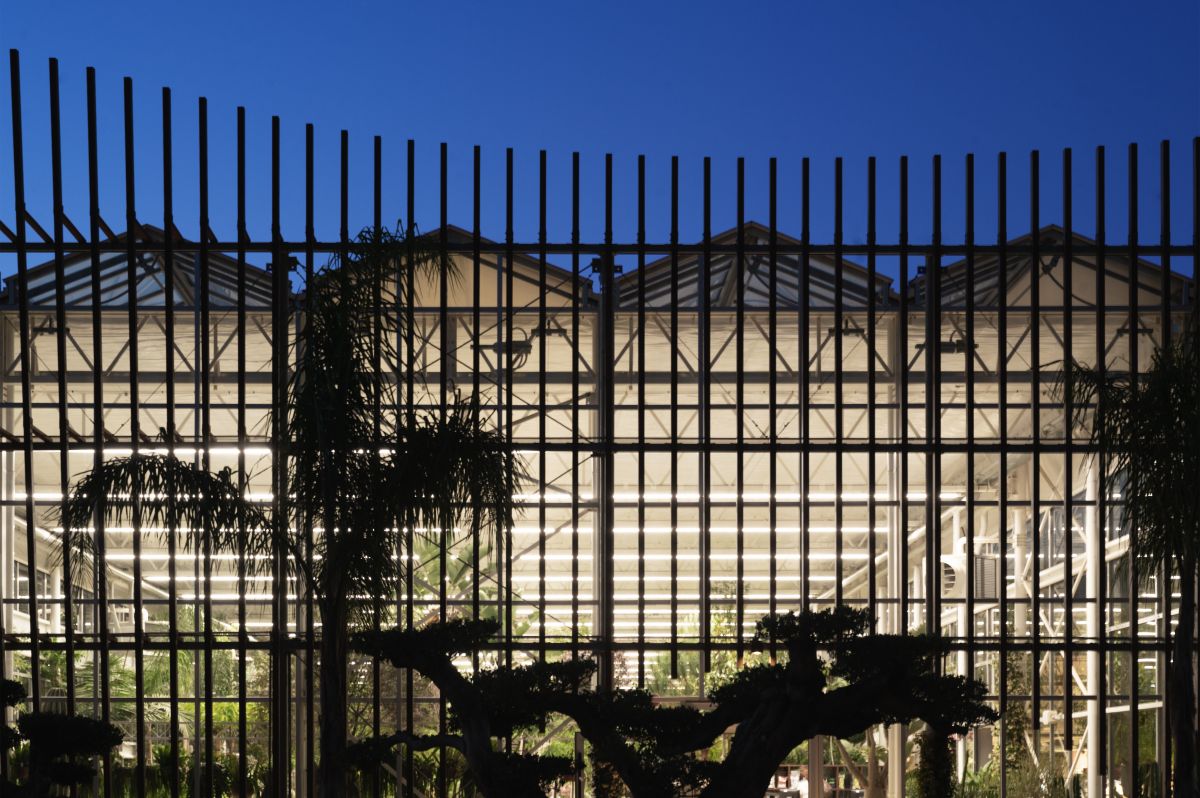
The urbanized territory often offers unique opportunities for reflection and research. In redefining a place abandoned by its original functions, it is essential to begin with an interpretation of the elements that remain, as well as the social and testimonial value of the existing buildings. In the project for the urban regeneration of a former greenhouse in Pistoia, we found ourselves working on a fringe area, near to the road infrastructure that connects the city of Pistoia with the eastern area towards Prato. This territory is characterized by plant nurseries and small historic hamlets that together form a distinctive unicum in Pistoia’s urban landscape. With the Naturart Village project, we had the opportunity to explore how a disused peri-urban area could be “regenerated,” creating the conditions for reactivating relational flows. The starting point was Garden Tourism: widely developed in AngloSaxon countries and now gaining ground in Italy. Naturart Village was conceived as a response to this trend an integrated greenhouse, nursery, and park complex offering a wide range of green-related activities, designed to bring citizens, and especially younger generations, closer to nature, agriculture, and ornamental horticulture.
Specifically, the key drivers of the intervention were:
- Functional mixité;
- Strengthening of the floricultural and arboreal exhibition program;
- Activation of cultural initiatives consistent with the site’s identity;
-Creation of an urban park for leisure use.
On these premises, through the careful restoration of the existing greenhouse and the addition of a new exhibition space, it became possible to lay the groundwork for the urban regeneration of an area of Pistoia strongly characterized by its floricultural vocation.
- Functional mixité;
- Strengthening of the floricultural and arboreal exhibition program;
- Activation of cultural initiatives consistent with the site’s identity;
-Creation of an urban park for leisure use.
On these premises, through the careful restoration of the existing greenhouse and the addition of a new exhibition space, it became possible to lay the groundwork for the urban regeneration of an area of Pistoia strongly characterized by its floricultural vocation.
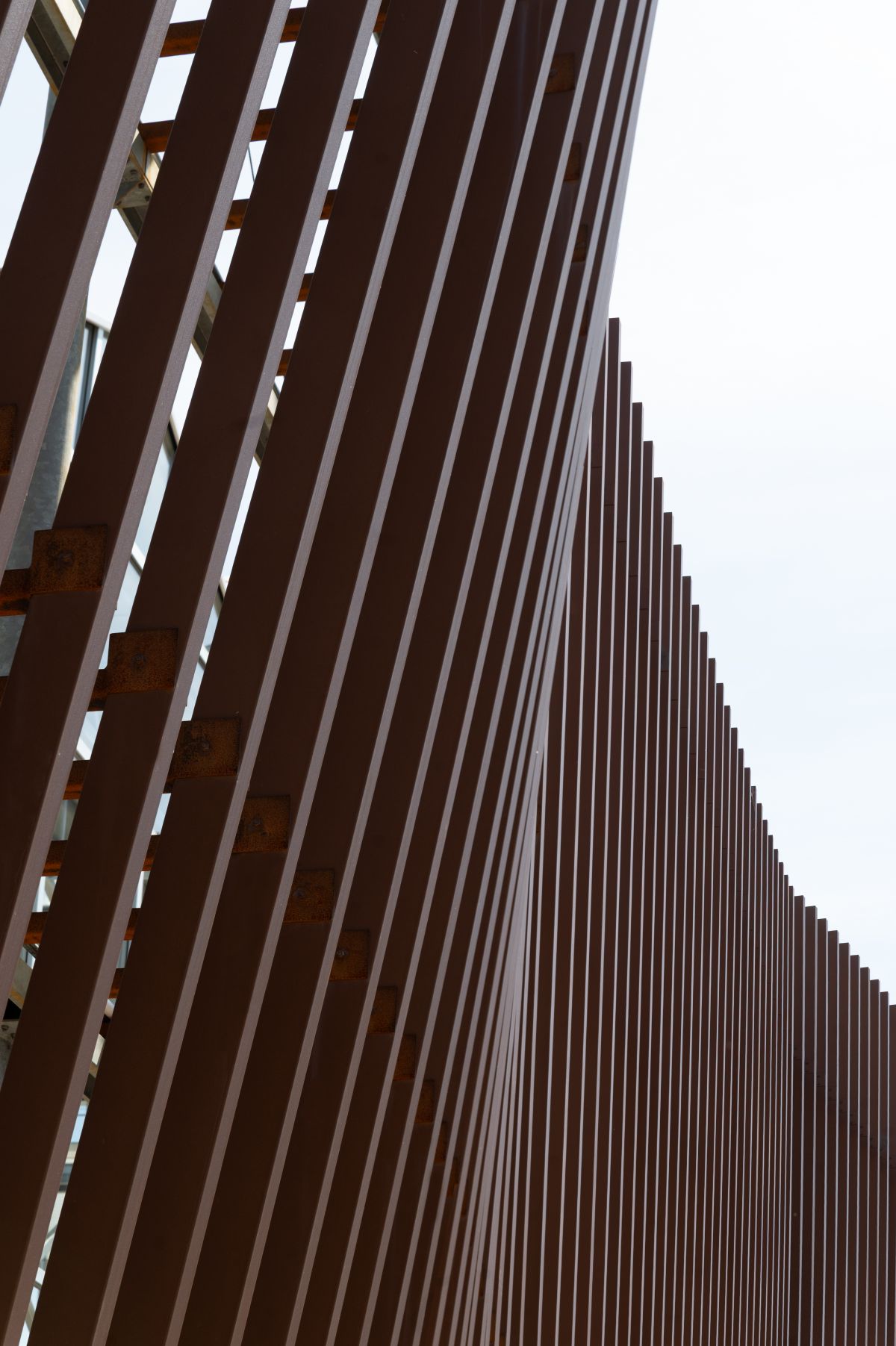
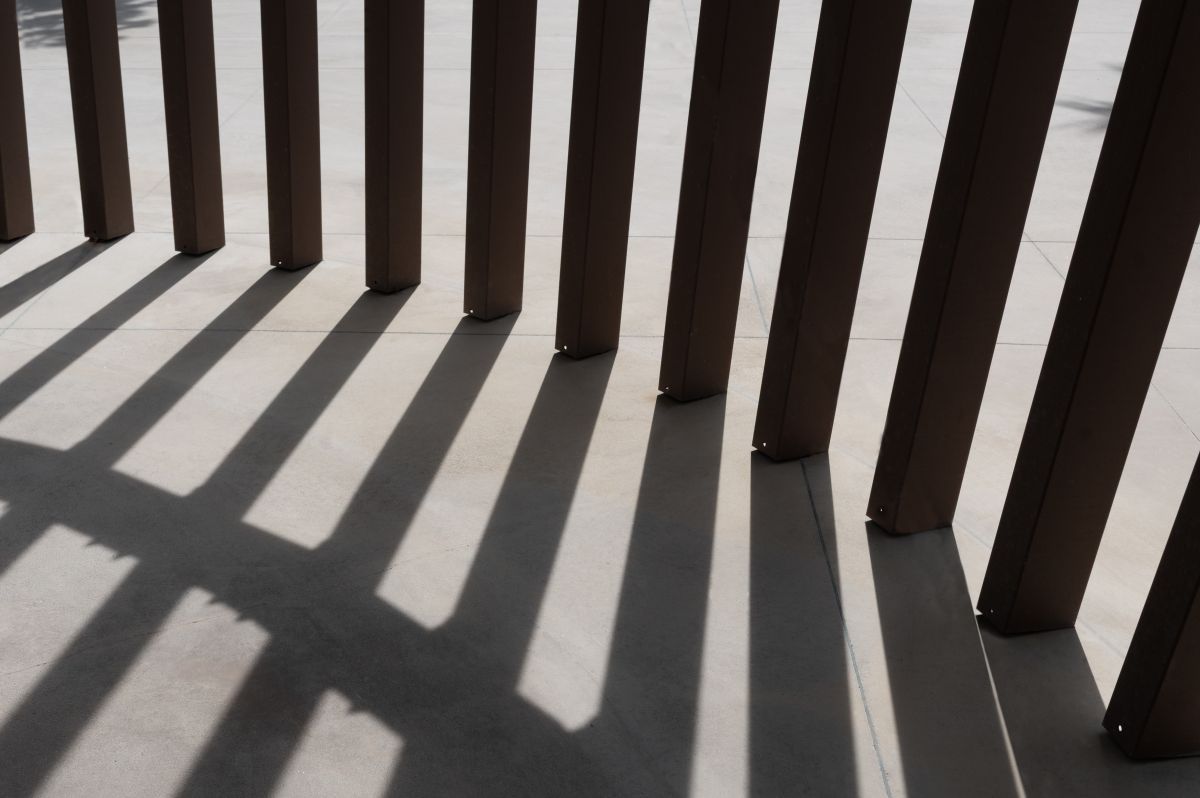
Functional mixité was fostered by allowing commercial activities within the historic greenhouse. This made it possible to introduce food-related services which, combined with the promotion and involvement of outstanding local businesses, created an integrated system of unique exclusivity in its offer.
The strengthening of the exhibition program was achieved through a new double-height volume, where tall plant species are displayed, creating an immersive indoor forest that emphasizes spatial fluidity and the natural continuity of the environment. Adjacent to this space, in a residual portion, there is room for small meetings and cultural initiatives such as themed exhibitions and temporary focus events.
The building complex is composed of two greenhouses one restored and one newly constructed designed with different typologies: one with flat-beam roofing and the other with gabled roofs.
This typological variety reflects the different functions within: the gabled greenhouse for commercial activities, and the flat beam greenhouse for the plant showroom. Marking the boundary between the built structures and the green space is a large metal brise-soleil, conceived both as a visible sign of the park within the surrounding landscape and as a protective screen for the activities inside the greenhouses, offering shade and shelter from the intense summer heat typical of the area.
The architectural language of the new building recalls the essence of greenhouses, particularly through the use of light-colored treated steel and glass. This approach helps blur the distinction between inside and outside, making the boundary almost imperceptible.
The goal was not to emphasize the container as a dominant symbol, but rather to render its envelope light and discreet.
The program hosts a wide variety of functions: a showroom for plant exhibitions, a green education space, meeting areas, and spaces for dining and the sale of local food products. The “ring-shaped” park is organized into four macro areas, all converging towards the greenhouses: the western area with an articulated exhibition of plants, bonsai, and cacti; the eastern area with educational spaces and children’s play areas; and two northern sections hosting a large rose garden and an orangery.
